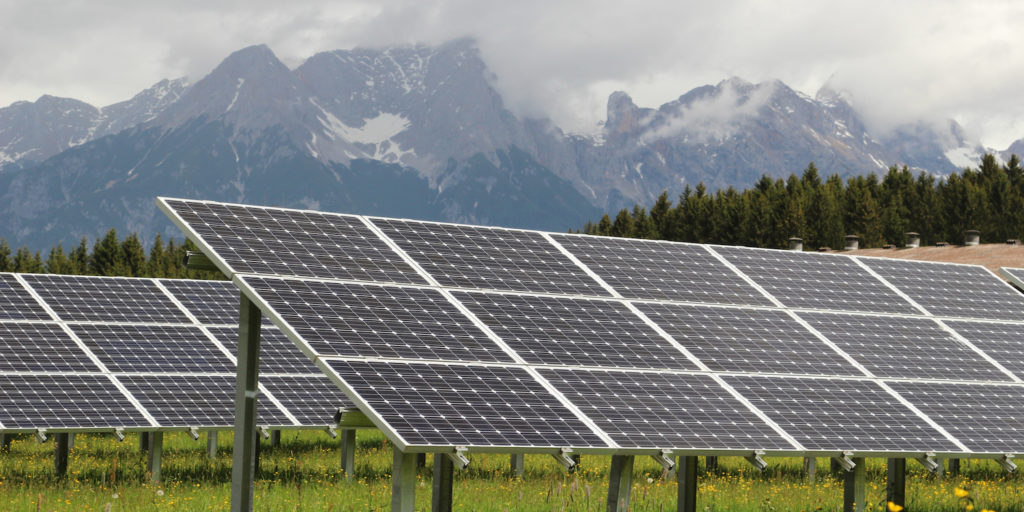More than 2 GW of solar was installed in Austria in 2023, according to Austrian PV analyst Hubert Fechner. The vice chair of the Austrian PV Technology Platform, a PV manufacturing and research association, told pv magazine he does not have official data confirming the exact figure, but feedback from grid operators suggests the threshold has been exceeded.
“If we will end up at 2.2 [GW] or 2.5 [GW] nobody knows for that moment,” he said.
“But we have surpassed the threshold of 2 GW.”
Austria installed 1 GW of solar in 2022, according to PV Austria. This brought the country’s total PV capacity to 3.78 GW – accounting for 6.6% of total electricity demand. Austria installed 740 MW of new PV systems in 2021, 341 MW in 2020, and 247 MW in 2019. Hubert said if the landlocked central European country maintained this installation pace, “We might reach about 20 GW by 2030 and 40 GW by 2040 as it is indicated in our national plans.”
The 2021 Renewable Energy Extension Act (EAG) stipulates that 11 TWh of solar energy will need to account for 27 TWh of increased renewable electricity generation by the end of the decade. The Austrian Government said solar will “rely” on one million rooftop installations to reach the target.
Fechner’s comments come as the International Energy Agency (IEA) released its national survey on Austrian PV applications in 2022. The report, authored by Fechner, states the local market is still dominated by rooftop installations – comprising 83% of all of PV projects. But for the first time, a “significant number of larger ground-mounted PV systems were reported” with 157 MW of utility-scale PV installed in 2022, according to the document.
Fechner said rooftop solar installations were popular due to policies incentivizing PV deployment on existing infrastructure, such as buildings and car parks. The general public's anxiety over disappearing space, also known as land being “sealed,” also played into rooftop solar's popularity, he said.
Research shows a “ substantial” amount of Austrian permanently habitable land is continuously covered in asphalt, concrete, or other materials for residential, commercial, and infrastructural uses. “The country size is limited,” Fechner said.
“PV does not seal anything, but land use is a big topic in Austria and that's why we want to have a big preference in using PV on existing buildings in a double functionality way.”
Popular content
He attributes the uptick in 2022 utility-scale installations to increased general acceptance of solar, more ambitious targets as well as surging argi-PV. While Fechner does not have the data surrounding solar installations on agricultural land, he said anecdotal evidence reveals “the trend of agriPV is growing.”
Another trend is the growing amount of energy communities, with 600 currently operational in Austria and “many more” in development, according to the report. Fechner said the Austrian Government's Climate and Energy Fund, with €45 million ($49 million) earmarked for energy community storage, has been the “driving force for energy communities to be developed further.”
Austria maintaining its 2 GW solar installation streak in the future would be a “big success,” the expert said. However, the report warns of “sustainable growth,” stating that special efforts need to be made to maintain the pace required to fulfill the larger 41 TWh by 2040 goal. Asked how sustainable growth can be achieved, Fechner said it was a “good question” and that “nobody knows” the answer.
“What we have seen in 2023 was mainly what started in 2022 with the Ukraine war,” he said.
“Austria has the most or the highest dependency on Russian gas in Europe. A lot of people want to get rid of it and try to find alternatives and this mainly drives two people towards PV installations and heat pumps. The market with both technologies has increased very much.”
Fechner said installers are expressing anxiety that the PV bubble will eventually burst, and that connection is troublesome. He said network providers are claiming their grids are “full” and it is “no longer possible” to inject solar into infrastructure. “We need solutions,” Fechner said, before adding strengthening the domestic manufacturing sector would be another win.
According to the report, no silicon, ingot or wafer products were made in Austria in 2022. However, four manufacturers – Kioto Photovoltaics GmbH, Energetica-Photovoltaic industries, DAS Energy, and Ertex-Solartechnik GmbH – produced 2,083 MW of PV modules, with Austrian solar heavyweight Fronius producing 415 GW worth of inverters in the same year.
“We should really try to help Austria's industry survive on the international market because this competition with Asian and Chinese production is very heavy,” Fechner said. “If we can succeed to keep our production and come out with innovative modules, inverters and other equipment, I think this would be highly successful.”
This content is protected by copyright and may not be reused. If you want to cooperate with us and would like to reuse some of our content, please contact: editors@pv-magazine.com.


By submitting this form you agree to pv magazine using your data for the purposes of publishing your comment.
Your personal data will only be disclosed or otherwise transmitted to third parties for the purposes of spam filtering or if this is necessary for technical maintenance of the website. Any other transfer to third parties will not take place unless this is justified on the basis of applicable data protection regulations or if pv magazine is legally obliged to do so.
You may revoke this consent at any time with effect for the future, in which case your personal data will be deleted immediately. Otherwise, your data will be deleted if pv magazine has processed your request or the purpose of data storage is fulfilled.
Further information on data privacy can be found in our Data Protection Policy.